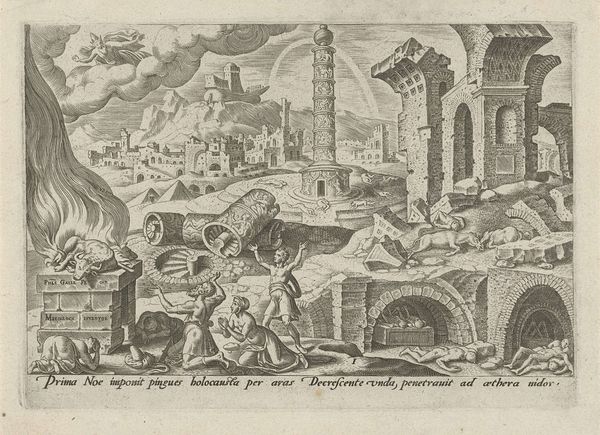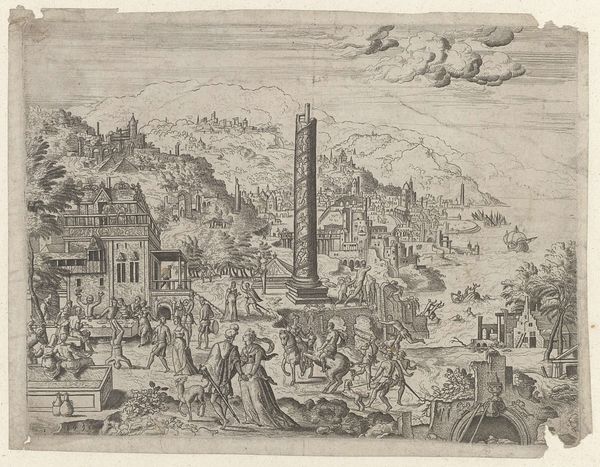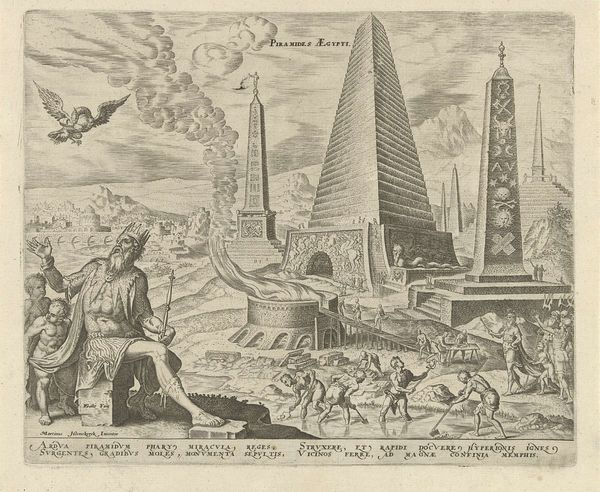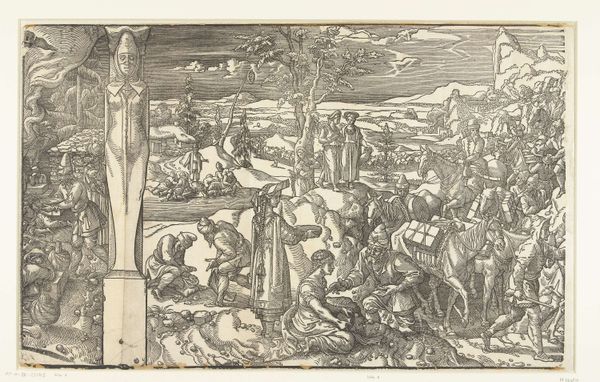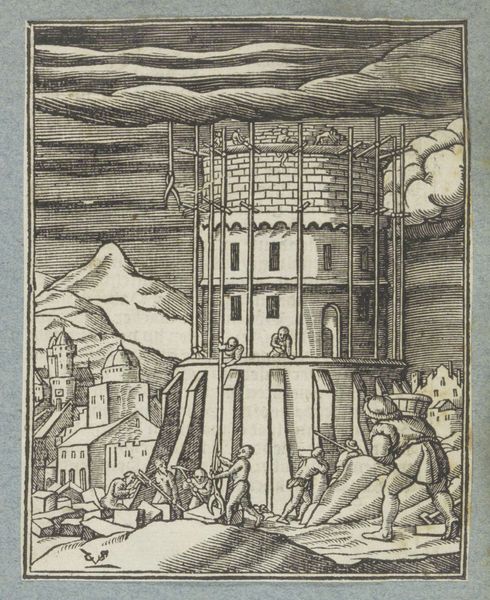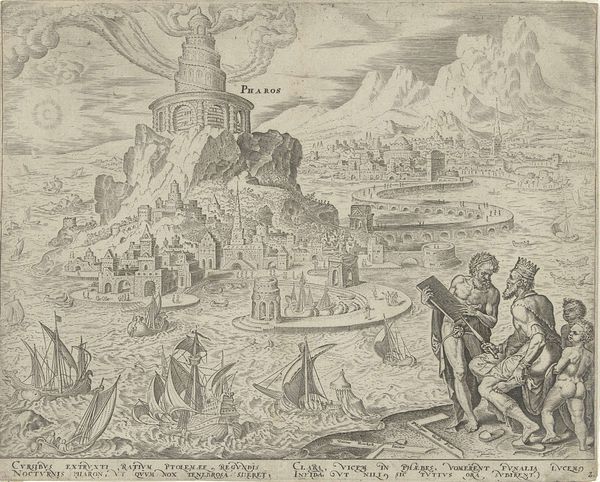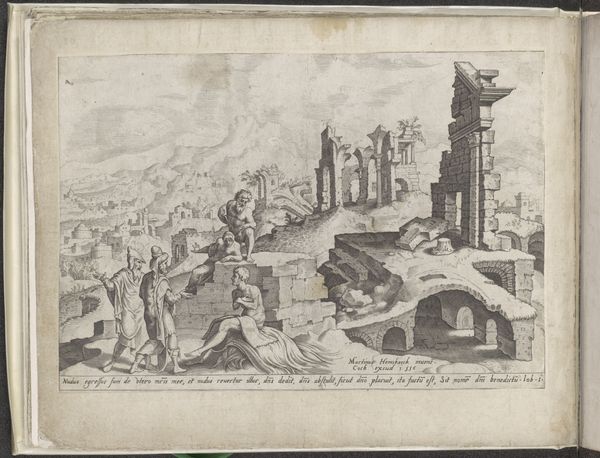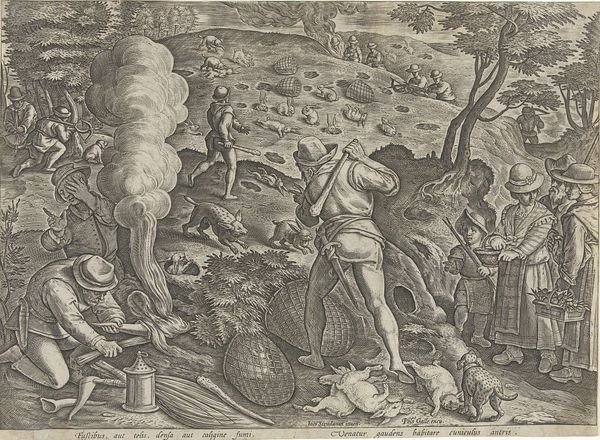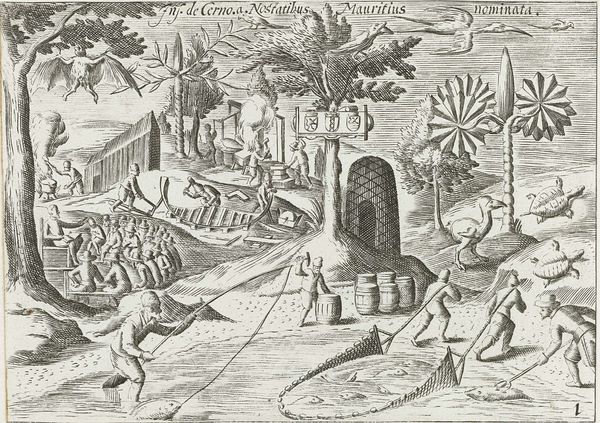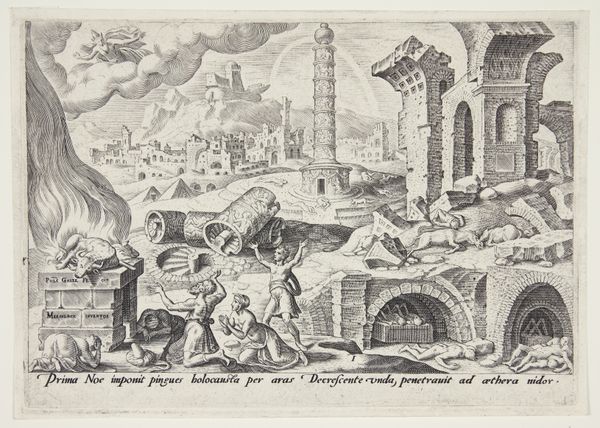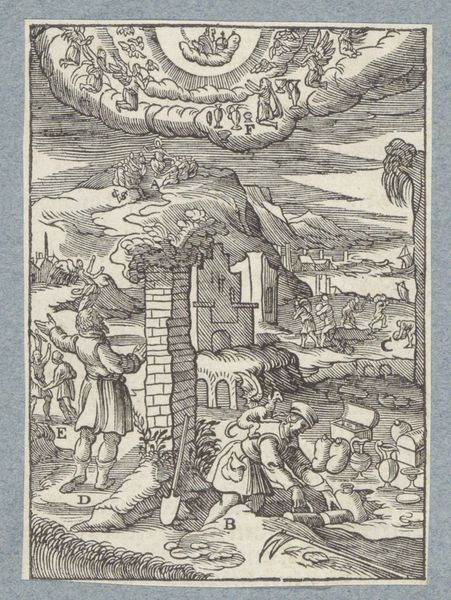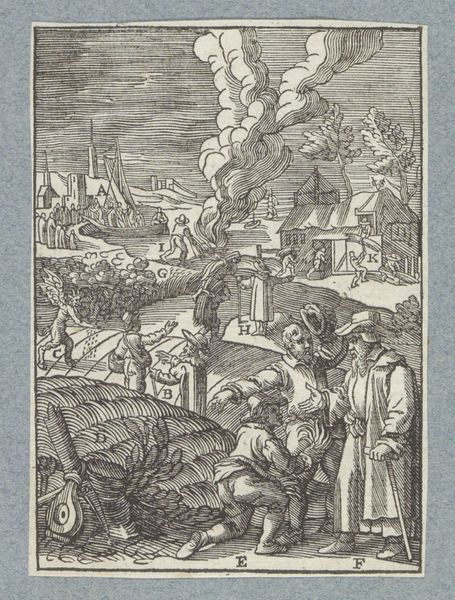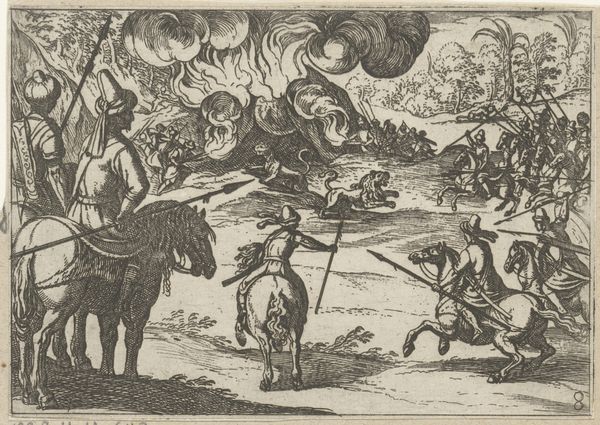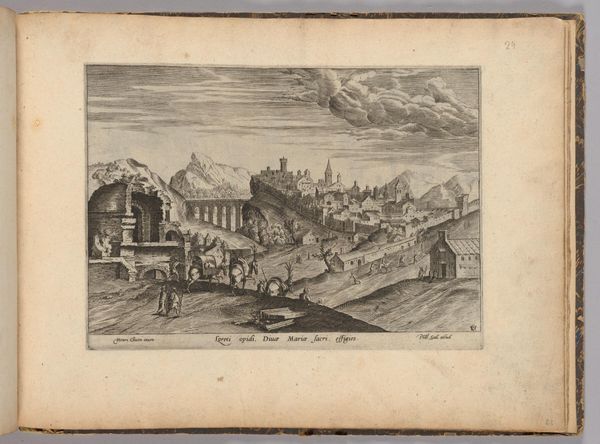
painting, print, engraving
#
painting
# print
#
landscape
#
ancient-egyptian-art
#
oil painting
#
coloured pencil
#
ancient-mediterranean
#
history-painting
#
engraving
Dimensions: height 209 mm, width 253 mm, height 539 mm, width 370 mm
Copyright: Rijks Museum: Open Domain
Editor: This is "Piramiden van Egypte," or "The Pyramids of Egypt," an engraving from 1572 by Philips Galle, currently housed in the Rijksmuseum. It has such an unusual mix of imagery, almost dreamlike. What strikes me is the figure in the foreground—who is he and what is he looking at? How do you interpret this work? Curator: This print gives us insight into the complex ways early modern Europeans understood and depicted the ancient world. Look closely—what do you notice about how Egyptian monuments are rendered here? How does it relate to other examples of so-called orientalism? Editor: Well, it looks like a landscape painting with people working, almost like a construction site...it's definitely not how the pyramids look today. Curator: Exactly. Galle wasn't necessarily aiming for historical accuracy. This is more about European ideas *of* Egypt. Consider the socio-political context. Europe at this time was solidifying its power through trade and colonialism, creating an imagined vision of other places to better define its own identity and exert control. Can you see this dynamic at play here? What does this imaginary construction site evoke? Editor: It seems… exploitative. As if the artist is showing the subjugation of another culture, turning ancient wonders into a commodity or a sign of power? The man on the left looms over what's happening in the mid-ground; he seems to embody dominance. Curator: Precisely. The engraving can be viewed as a visual document of early cultural appropriation, showcasing not necessarily ancient Egypt, but European attitudes toward the ‘Orient’. Consider how art like this shaped—and continues to shape—perceptions of different cultures. What do you take away from this perspective? Editor: It highlights the need to critically examine the historical narratives embedded within art and media and also demonstrates the intermingling of power and visual culture! Thanks for the discussion. Curator: Absolutely, this piece encourages a wider appreciation for historical context and cultural awareness!
Comments
No comments
Be the first to comment and join the conversation on the ultimate creative platform.
